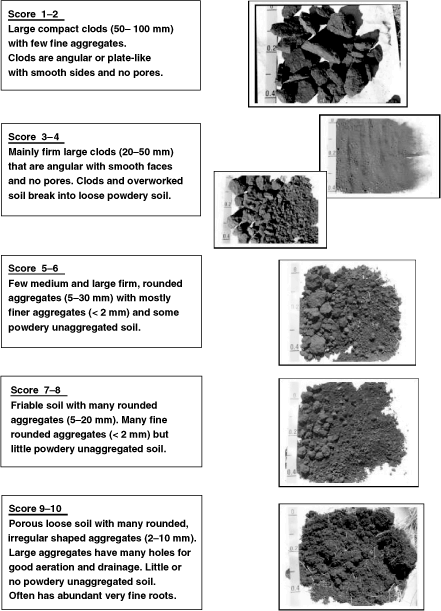Linking Tasmanian potato and poppy yields to selected soil physical and chemical properties
W. E. Cotching A E , L. A. Sparrow B , K. Hawkins C , B. E. McCorkell D and W. Rowley BA Department of Primary Industries, Water and Environment, PO Box 303, Devonport, Tas. 7310, Australia.
B Tasmanian Institute of Agricultural Research, PO Box 46, Kings Meadows, Tas. 7249, Australia.
C Department of Primary Industries, Water and Environment, PO Box 46, Kings Meadows, Tas. 7249, Australia.
D Department of Primary Industries, Water and Environment, PO Box 44A, Hobart, Tas. 7001, Australia.
E Corresponding author. Email: Bill.Cotching@dpiwe.tas.gov.au
Australian Journal of Experimental Agriculture 44(12) 1241-1249 https://doi.org/10.1071/EA03023
Submitted: 9 January 2003 Accepted: 15 January 2004 Published: 24 January 2005
Abstract
Selected soil properties and paddock management characteristics were measured for 121 potato and poppy crops in north and northwest Tasmania to see if variation in these characteristics explain variation in crop yield. The soil properties we selected were those that previous work found had changed the most as a result of cropping and, therefore, may be affecting yield on the particular soil type. The soil properties and management characteristics that were significantly correlated with crop yield varied with crop and soil type. None of the soil characters had correlation coefficients greater than 0.63, probably reflecting the capacity of individual farmers to overcome particular soil limitations through their management of tillage, nutrition, irrigation, weeds and pathogens. On ferrosols, a visual score of soil structure was significantly correlated with potato yield (r = 0.57) and exchangeable aluminium was significantly correlated with poppy yield (r = 0.63). Exchangeable calcium (r = 0.54) and penetration resistance (r = 0.38) correlated positively and topdressed nitrogen (r = –0.49) correlated negatively with poppy alkaloid assay, an important determinant of overall poppy yield. On dermosols, depth to 2000 kPa penetration resistance (r = 0.60) and fertiliser P (r = –0.67) were correlated with potato yield, structure score correlated with poppy yield (r = 0.59), and penetration resistance with poppy assay (r = 0.52). On sodosols, fertiliser K (r = –0.41 and r = 0.55) and N (r = –0.45 and 0.42) correlated negatively with poppy yield and positively with poppy assay. On clay loam soils such as dermosols and ferrosols, increased topsoil cloddiness appears to be having a deleterious effect on crop yield. Cloddiness is readily assessed on these soils using the structure scorecard, which could therefore become a practical diagnostic test for farmers and advisers.
Additional keywords: dernosols, ferrosols, sodosols, tenosols.
Acknowledgments
We thank the farmers who allowed us to sample their soils. Financial support was provided by the Natural Heritage Trust.
Bell MJ,
Harch GR, Bridge BJ
(1995) Effects of continuous cultivation on ferrosols in subtropical southeast Queensland. I. Site characterization, crop yields and soil chemical status. Australian Journal of Agricultural Research 46, 237–253.
| Crossref |
Crossref |
(verified December 2004).
Reid JB,
Stone PJ,
Pearson AJ, Wilson DR
(2002) Yield response to nutrient supply across a wide range of conditions. 2. Analysis of maize. Field Crops Research 77, 173–189.
| Crossref | GoogleScholarGoogle Scholar |
(verified December 2004).
Sojka RE, Upchurch DR
(1999) Reservations regarding the soil quality concept. Soil Science Society of America Journal 63, 1039–1054.

Sparrow LA,
Cotching WE,
Cooper J, Rowley W
(1999) Attributes of Tasmanian ferrosols under different agricultural management. Australian Journal of Soil Research 37, 603–622.

Temple-Smith MG,
Wright DN,
Laughlin JC, Hore BJ
(1983) Field response of poppies (Papaver somniferum L.) to lime application on acid krasnozems in Tasmania. Journal of Agricultural Science, Cambridge 100, 485–492.

Walkley A, Black IA
(1934) An examination of the Degtjareff method for determining soil organic matter and a proposed modification of the chromic acid titration method. Soil Science 37, 29–38.


|


